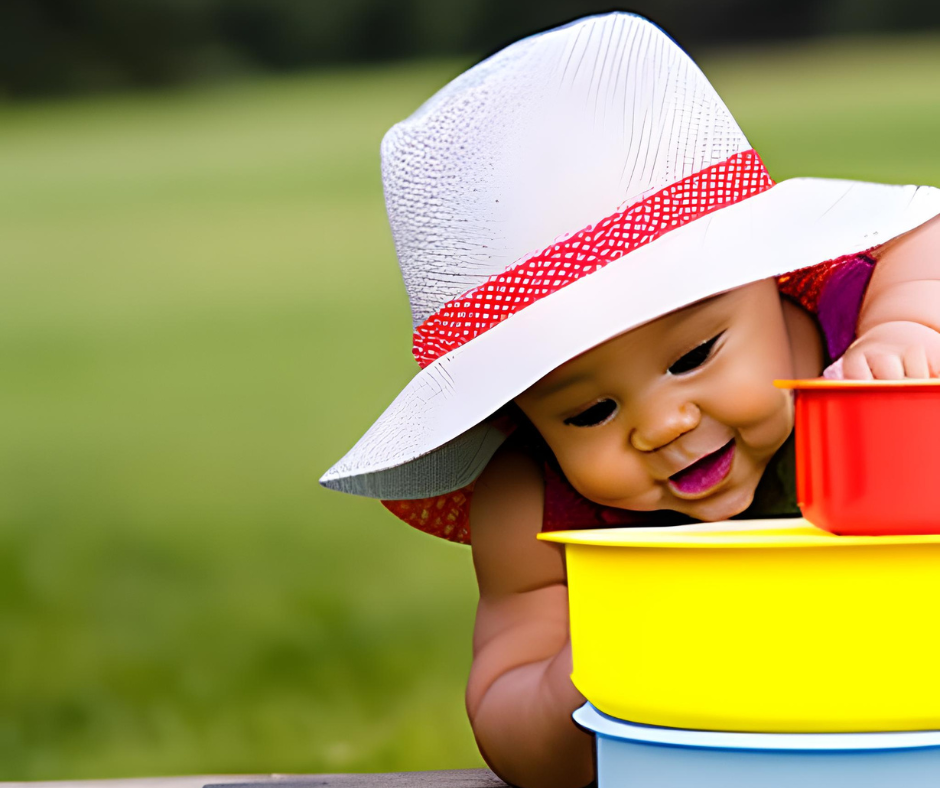Fostering Creativity in Young Children through Purposeful Play
Fostering Creativity in Young Children through Purposeful Play

As parents and educators, we all want our children to grow up to be creative, innovative, and successful individuals. But how can we encourage creativity in young children? The answer is simple: through purposeful play. Purposeful play is an intentional, structured type of play that is designed to promote learning and development. When done correctly, purposeful play can help young children develop important cognitive, social-emotional, and physical skills while also fostering their creativity.
Imagine a preschool classroom where children are encouraged to explore and experiment with different materials, create their artwork, build structures using blocks and other construction materials, and engage in imaginative play with their classmates. In this classroom, children are free to take risks, make mistakes, and come up with their unique ideas. They are supported by their teachers and peers and are encouraged to think outside the box.
Now, imagine another preschool classroom where children are given little to no opportunities for purposeful play. In this classroom, children spend most of their time sitting at desks, listening to lectures, and completing worksheets. They have little time for creative expression and are not encouraged to take risks or explore their own interests.
Which classroom would you rather your child be in? Purposeful play has numerous benefits for young children, including promoting creativity, problem-solving skills, and social-emotional development. In this blog, we will explore the importance of creativity in early childhood development, the role of purposeful play in fostering creativity, and creative play ideas for young children. So let’s dive in and learn how to foster creativity in young children through purposeful play!
Why is creativity important in early childhood development?
Creativity is a fundamental part of human nature and an essential skill that greatly benefits children’s early development. It is the ability to generate new and unique ideas, think outside the box, and use imagination to explore and solve problems.
For young children, creativity plays a crucial role in their overall development, as it helps them to express themselves, develop a sense of curiosity and wonder, and make sense of the world around them. Creativity is not limited to artistic expression or musical talent but encompasses a wide range of skills, including problem-solving, critical thinking, communication, and innovation.
Purposeful play is play that is intentionally designed to promote learning and development in young children. It involves activities that engage children’s curiosity, imagination, and creativity, such as building with blocks, playing dress-up, or making art. Purposeful play encourages children to explore, experiment, and discover new things, helping them to develop important skills that will serve them well throughout their lives.
Purposeful play is an intentional approach to play that encourages children to explore, experiment, and learn through play, fostering their creativity, problem-solving skills, and critical thinking abilities. It helps children develop resilience, a growth mindset, and social skills.
Creative play ideas for young children
Here are some creative play ideas for young children that can help foster their creativity:
1. Sensory play
Sensory play is a great way to encourage young children to explore their senses and use their imagination. You can create a sensory bin with materials such as water beads, rice, or sand, and let children explore and experiment with different textures and colors. You can also add tools like scoops, spoons, and funnels to encourage children to manipulate and experiment with the materials. 2. Building and construction play
Building with blocks or other construction materials is a classic play activity that can foster creativity and problem-solving skills in young children. You can provide children with different types of blocks, such as wooden blocks, magnetic blocks, or foam blocks, and encourage them to build towers, houses, or other structures.
3. Imaginative play
Imaginative play allows young children to use their creativity and imagination to act out different scenarios and explore different roles. You can provide children with dress-up clothes, puppets, or other props to encourage imaginative play. You can also create a play area with different props, such as a play kitchen, a doctor’s office, or a grocery store, to encourage children to explore different roles and scenarios.4. Art and creativity play
Art and creative play allow children to express themselves and explore different textures, colors, and shapes. You can provide children with different art materials, such as crayons, markers, paint, or clay, and encourage them to create their own artwork. You can also provide children with recycled materials, such as cardboard boxes, paper towel rolls, or bottle caps, and encourage them to use their imagination to create their own masterpieces.
4. Outdoor play
Outdoor play is a great way for young children to explore nature and develop their physical skills. You can create a backyard play area with a sandbox, swings, or a slide, or take children to a local park to explore nature and play on different equipment.
Through purposeful play, children can develop important skills such as problem-solving, creativity, social skills, and physical development. By providing children with a structured environment to develop their creativity while also promoting their cognitive, social-emotional, and physical development, we can help set them up for success in their future endeavors. Ultimately, fostering creativity through purposeful play is not only essential for the growth and development of young children, but it can also be a fun and enjoyable experience for both children and adults alike.




 The Need for Diverse Learning Experiences
The Need for Diverse Learning Experiences 


Leave a Reply
Want to join the discussion?Feel free to contribute!